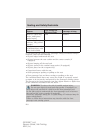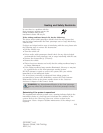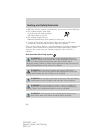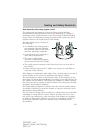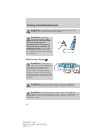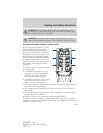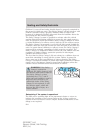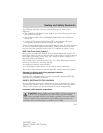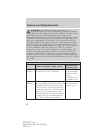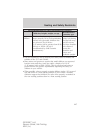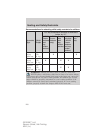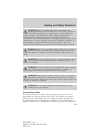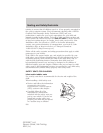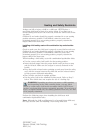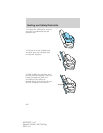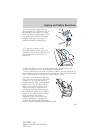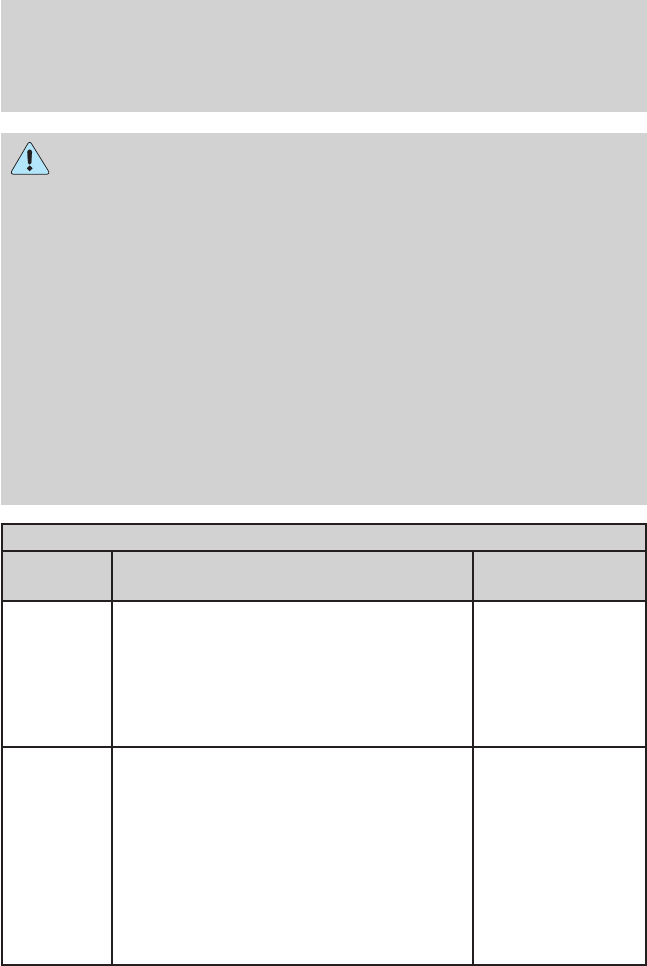
WARNING: All children are shaped differently. The
Recommendations for Safety Restraints are based on probable
child height, age and weight thresholds from NHTSA and other safety
organizations or are the minimum requirements of law. Ford
recommends checking with a NHTSA Certified Child Passenger Safety
Technician (CPST) and consult your pediatrician to make sure your
child seat is appropriate for your child, and is compatible with and
properly installed in the vehicle. To locate a child seat fitting station
and CPST contact the NHTSA toll free at 1-888-327-4236 or on the
internet at http://www.nhtsa.dot.gov. In Canada, check with your local
St. John Ambulance office for referral to a CPST or for further
information, contact your provincial ministry of transportation, your
local St. John Ambulance office at http://www.sfa.ca, or Transport
Canada at 1–800–333–0371 (http://www.tc.gc.ca). Failure to properly
restrain children in safety seats made especially for their height, age,
and weight may result in an increased risk of serious injury or death to
your child.
Recommendations for Safety Restraints for Children
Child size, height, weight, or age
Recommended
restraint type
Infants or
toddlers
Children weighing 40 lb (18 kg) or less
(generally age four or younger)
Use a child safety
seat (sometimes
called an infant
carrier,
convertible seat,
or toddler seat).
Small
children
Children who have outgrown or no
longer properly fit in a child safety seat
(generally children who are less than
4 feet 9 inches (1.45 meters) tall, are
greater than age four (4) and less than
age twelve (12), and between 40 lb
(18 kg) and 80 lb (36 kg) and upward
to 100 lb (45 kg) if recommended by
your child restraint manufacturer)
Use a
belt-positioning
booster seat.
Seating and Safety Restraints
226
2010 MKT (mkt)
Owners Guide, 3rd Printing
USA (fus)



